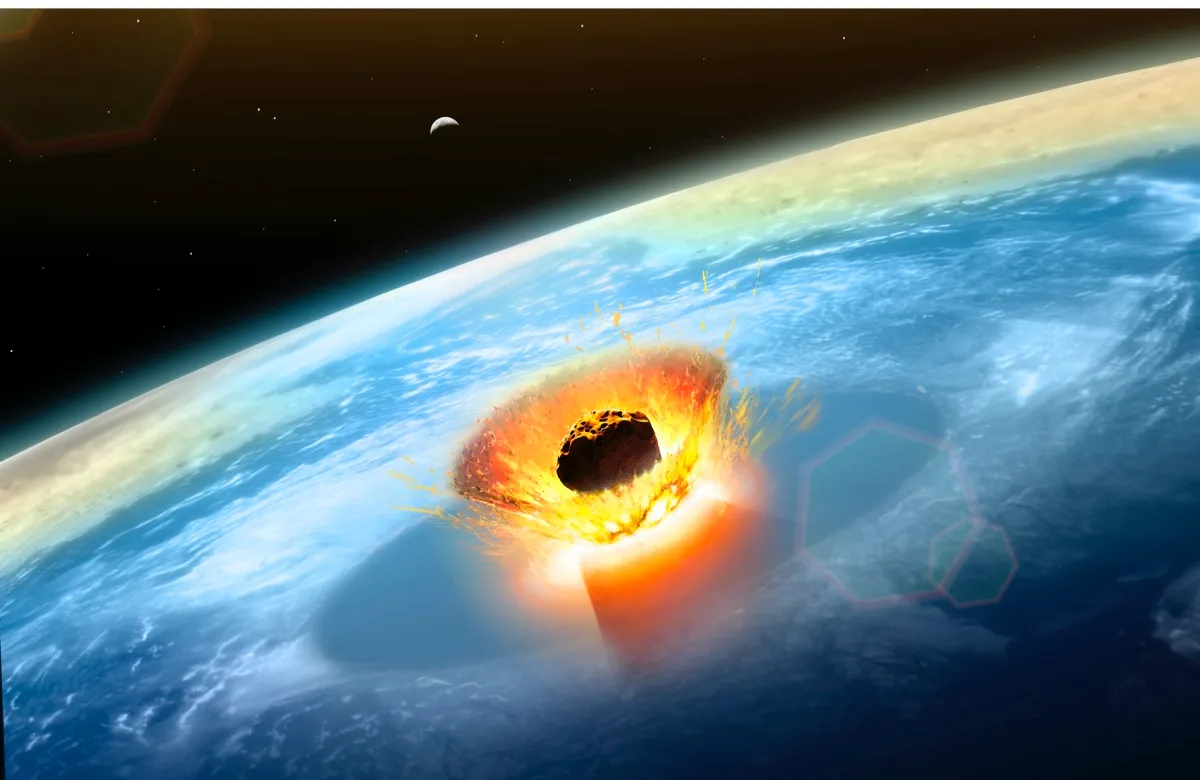The 1km-wide asteroid (7482) 1994 PC1 will make its closest approach to Earth at 9:51pm UTC this evening (18 January).
But don’t worry if the film Don’t Look Up has got you all twitchy about the possibility of a catastrophic collision with our planet: 1994 PC1 will safely pass at a distance of 1,982,172km (1,231,664 miles). That's about five times the distance from Earth to the Moon.
What do we know about 1994 PC1?
The asteroid was discovered in August 1994 by the astronomer Robert McNaught at the Siding Spring Observatory in Coonabarabran, Australia. It is classified as an Apollo-class asteroid, which are objects whose orbits cross the orbit of Earth. There are currently 15,479 known Apollo-class asteroids.
1994 PC1 takes 572 days to orbit the Sun. It rotates on its axis every two and a half hours.
Its size of 1km makes it pretty big in asteroid terms. These rocky bodies can range in size from as small as one metre across, to giants like Vesta, which is more than 530 kilometres in diameter.

Should I be worried about 1994 PC1?
The asteroid is classed as a potentially hazardous object (PHO). This is a near-Earth object, such as an asteroid or comet, that makes close approaches to Earth and is large enough to cause damage in the event of an impact. Astronomers can model the orbits of asteroids and comets, and 99 per cent of PHOs – including 1994 PC1 – are not considered to be an impact threat over the next 100 years.
NASA’s Planetary Defense Coordination Office (PDCO) was established in 2016 in order to address the impact hazard of near-Earth objects. The PDCO detects PHOs measuring more than 30 to 50 metres in size that come within 8,000,000km (5,000,000 miles) of Earth’s orbit. As 1994 PC1 falls within these parameters, it is a well-studied asteroid, and if there was any chance of impact, the PDCO would be poised to notify governmental departments.
How can I see 1994 PC1?
The passage of 1994 PC1 is still exciting in astronomical terms. The next time it will pass at a similar distance will be 18 January 2105. While the asteroid will be too dim to see with the naked eye or binoculars, those with a telescope might be able to spot it. Stargazers should see it tracking across the sky in front of background stars. And for those people who prefer to stay warm, there is a live asteroid tracker on the NASA website.

What are asteroids and comets?
Asteroids and comets are leftover remnants from the formation of our Solar System more than four billion years ago. Asteroids are rocky bodies that formed closer to the Sun than Jupiter, whereas comets are frozen balls of ice, rock and dust that were born further out in the Solar System and are recognised by their tail that spews out behind them.
According to NASA, there are currently 1,113,527 asteroids in the Solar System. The vast majority of these live in the main asteroid belt between Mars and Jupiter. The number of known comets is 3,743, but there are likely millions more orbiting beyond Neptune in the Kuiper Belt.
While it's still up for debate, the most likely cause of the mass extinction that wiped out the dinosaurs (except for birds) was an enormous 10km-wide asteroid crashing into planet Earth, which caused catastrophic volcanic eruptions and widespread climate change. The 150km-wide Chicxulub crater, on Mexico's Yucatan Peninsula, is thought to be where the asteroid smashed into the planet.
Read more about asteroids:

